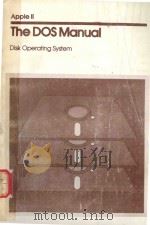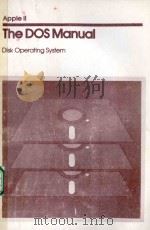《operating system design the xinu approach P486》
| 作者 | 编者 |
|---|---|
| 出版 | 未查询到或未知 |
| 参考页数 | |
| 出版时间 | 没有确切时间的资料 目录预览 |
| ISBN号 | 无 — 求助条款 |
| PDF编号 | 820559798(仅供预览,未存储实际文件) |
| 求助格式 | 扫描PDF(若分多册发行,每次仅能受理1册) |
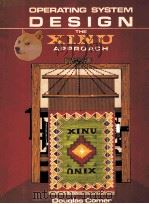
Chapter 1Introduction and Overview1
1.1 Operating Systems1
1.2 Our Approach2
1.3 What An Operating System Is Not3
1.4 An Operating System Viewed From The Outside4
1.5 An Operating System Viewed From The Inside16
1.6 Summary18
Chapter 2An Overview of the Machine and Run-Time Environment21
2.1 The Machine21
2.2 Disk Storage Organization31
2.3 The C Run-Time Environment35
2.4 Summary38
Chapter 3List and Queue Manipulation41
3.1 Linked Lists Of Processes41
3.2 Implementation Of The Q Structure43
3.3 Priority Queue Manipulation47
3.4 List Initialization49
3.5 Summary51
Chapter 4Scheduling and Context Switching53
4.1 The Process Table54
4.2 Process States56
4.3 Selecting A Ready Process56
4.4 The Null Process61
4.5 Making A Process Ready61
4.6 Summary63
Chapter 5More Process Management65
5.1 Process Suspension And Resumption65
5.2 System Calls68
5.3 Process Termination70
5.4 Kernel Declarations72
5.5 Process Creation73
5.6 Utility Procedures76
5.7 Summary78
Chapter 6Process Coordination81
6.1 Low-Level Coordination Techniques82
6.2 Implementation Of High-Level Coordination Primitives82
6.3 Semaphore Creation and Deletion87
6.4 Summary90
Chapter 7Message Passing93
7.1 Message Passing In Xinu94
7.2 Implementation Of Send95
7.3 Implementation Of Receive96
7.4 Summary98
Chapter 8Memory Management101
8.1 Memory Management On The 11/02102
8.2 Dynamic Memory Requirements In Xinu102
8.3 Low-Level Memory Management Procedures103
8.4 The Location Of Allocated Storage104
8.5 The Implementation Of Xinu Memory Management104
8.6 Summary111
Chapter 9Interrupt Processing113
9.1 Dispatching Interrupts113
9.2 Input And Output Interrupt Dispatchers114
9.3 The Rules For Interrupt Processing118
9.4 Rescheduling While Processing An Interrupt119
9.5 Summary120
Chapter 10 Real-Time Clock Management123
10.1 The Real-Time Clock Mechanism123
10.2 Optimization Of Clock Interrupt Processing124
10.3 The Use Of A Real-Time Clock125
10.4 Delta List Processing126
10.5 Putting A Process To Sleep127
10.6 Delays Measured In Seconds131
10.7 Awakening Sleeping Processes132
10.8 Deferred Clock Processing133
10.9 Clock Interrupt Processing135
10.10 Clock Initialization137
10.11 Summary137
Chapter 11Device Independent Input and Output141
11.1 Properties Of The Input And Output Interface142
11.2 Abstract Operations142
11.3 Binding Abstract Operations To Real Devices143
11.4 Binding I/O Calls To Device Drivers At Run-Time144
11.5 The Implementation Of High-Level I/O Operations147
11.6 Opening And Closing Devices151
11.7 Null And Error Entries In Devtab152
11.8 Initialization Of The I/O System153
11.9 Interrupt Vector Initialization156
11.10 Summary157
Chapter 12An Example Device Driver159
12.1 The Device Type Tty159
12.2 Upper And Lower Halves Of The Device Driver160
12.3 Synchronization Of The Upper And Lower Halves162
12.4 Control Block And Buffer Declarations162
12.5 Upper-Half Tty Input Routines165
12.6 Upper-Half Tty Output Routines169
12.7 Lower-Half Tty Driver Routines173
12.8 Tty Control Block Initialization181
12.9 Device Driver Control183
12.10 Summary185
Chapter 13System Initialization189
13.1 Starting From Scratch190
13.2 Booting Xinu191
13.3 System Startup192
13.4 Finding The Size Of Memory192
13.5 Initializing System Data Structures194
13.6 Transforming The Program Into A Process198
13.7 The Map Of Low Core199
13.8 Summary201
Chapter 14A Data Link Communication Driver203
14.1 The Difficult Problem Of Communication204
14.2 Nomenclature For The Network Software Layers204
14.3 A Dlc Driver Design205
14.4 The Important Details Of Dlc210
14.5 Dlc Finite State Output Machine212
14.6 Deferred Input And Stalled Output213
14.7 Implementation Of The Dlc Driver215
14.8 Upper-Half Dlc Driver Routines216
14.9 Lower-Half Dlc Driver Routines220
14.10 Dlc Driver Initialization226
14.11 Control Over Non-Blockmode Reception227
14.12 Summary228
Chapter 15 High-Level Memory Management and Message Passing231
15.1 Self-Initializing Modules232
15.2 Memory Marking233
15.3 Implementation Of Memory Marking233
15.4 Partitioned Space Allocation235
15.5 Buffer Pools236
15.6 Returning Buffers To The Buffer Pool239
15.7 Creating A Buffer Pool240
15.8 Initializing The Buffer Pool Table241
15.9 Communication Ports242
15.10 The Implementation Of Ports243
15.11 Other Operations On Ports251
15.12 Summary255
Chapter 16Frame-Level Network Communication257
16.1 Operation Of The Frame Manager258
16.2 Details Of The Frame-Level Protocol258
16.3 The Xinu Ring Network259
16.4 Messages,Packets,Frames,Blocks,And The Network Layers260
16.5 An Example Of Packet Transfer Across An Internet261
16.6 Frame-Level Processing264
16.7 The Frame Format265
16.8 The Interface Between The Frame And Internet Layers267
16.9 The Frame-Level Input Process269
16.10 The Frame-Level Output Process272
16.11 Using The Acknowledgement Timer275
16.12 Implementation Of The Timer276
16.13 Initialization Of The Frame Layer277
16.14 Optimizing The Transfer Of Datagrams To Frames279
16.15 Summary279
Chapter 17A Disk Driver283
17.1 Operations Supplied By The Disk Driver283
17.2 Controller Request And Interface Register Descriptions284
17.3 The List Of Pending Disk Requests286
17.4 Enqueuing Disk Requests288
17.5 Optimizing the Request Queue291
17.6 Starting A Disk Operation293
17.7 Driver Initialization295
17.8 The Upper-Half Read Routine297
17.9 The Upper-Half Output Routine298
17.10 Implementation Of The Upper-Half Output Routine299
17.11 The Upper-Half Seek Routine300
17.12 The Lower-Half Of The Disk Driver301
17.13 Flushing Pending Requests303
17.14 Summary306
Chapter 18File Systems309
18.1What Is A File System?309
18.2Disk And File Servers311
18.3A Local File System311
18.4Data Structures For The File System312
18.5Implementation Of The Index Manager313
18.6Operations On I-Blocks315
18.7The Directory Structure321
18.8 Using The Device Switch Table For Files322
18.9 Establishing A Pseudo-Device325
18.10 Pseudo-Device Driver Routines331
18.11 Summary345
Chapter 19Exception Handling and Support Routines347
19.1 Exceptions,Traps,And Illegal Interrupts.347
19.2 Initialization Of Interrupt Vectors348
19.3 Implementation Of Panic348
19.4 Formatted Output353
19.5 Summary364
Chapter 20System Configuration367
20.1 The Need For Multiple Configurations367
20.2 Static vs.Dynamic Configuration368
20.3 The Details Of Configuration In Xinu368
20.4 Configuring A Xinu System373
20.5 System Calls And Procedures374
20.6 Summary375
Appendix 1A Quick Introduction to C377
Appendix 2Xinu Programmer’s Manual385
Bibliography469
Index477
《operating system design the xinu approach P486》由于是年代较久的资料都绝版了,几乎不可能购买到实物。如果大家为了学习确实需要,可向博主求助其电子版PDF文件。对合法合规的求助,我会当即受理并将下载地址发送给你。
高度相关资料
-
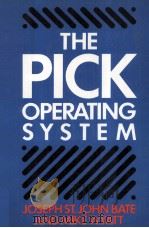
- The PICK Operating System
- 1986 Collins Professional and Technical Books
-
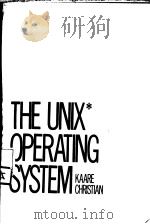
- THE UNIX OPERATING SYSTEM
- JOHN WILEY & SONS
-

- DIGITAL SIGNAL PROCESSING:A SYSTEM DESIGN APPROACH
- 1988年 JOHN WILEY AND SONS
-
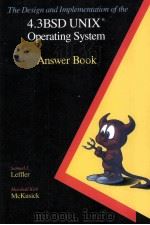
- THE DESIGN AND IMPLEMENTATION OF THE 4.3 BSD UNIX OPERATING SYSTEM ANSWER BOOK
- 1991 ADDISON-WESLEY PUBLISHING COMPANY
-
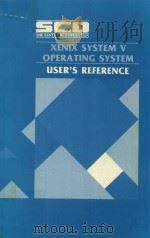
- XENIX SYSTEM V OPERATING SYSTEM
- THE SANTA CRUZ OPERATION
-
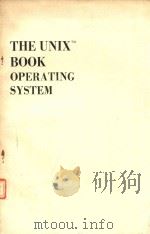
- THE UNIX BOOK OPERATING SYSTEM
- 1983 COPYRIGHT
-

- INSIDE THE JAVAOS OPERATING SYSTEM
- 1999 ADDISON-WESLEY
-

- OPERATING SYSTEM CONCEPTS FOURTH EDITION
- 1994 ADDISON-WESLEY PUBLISHING COMPANY
-

- LEARNING SYSTEM DESIGN AN APPROACH TO THE IMPROVEMNT OF INSTRUCTION
- 1974 MCGRAW-HILL BOOK COMPANY
-
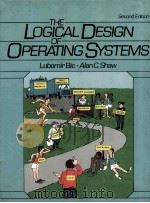
- The Logical Design of Operating Systems Second Edition
- 1988 Prentice Hall A Division of Simon & Schuster
-
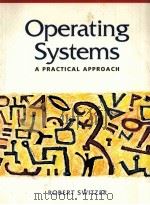
- Operating Systems A Practical Approach
- 1993 Prentice Hall International Ltd
-
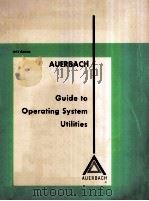
- Guide to Operating System Utilities
- 1978 AUERBACH Publishers Inc
提示:百度云已更名为百度网盘(百度盘),天翼云盘、微盘下载地址……暂未提供。➥ PDF文字可复制化或转WORD

